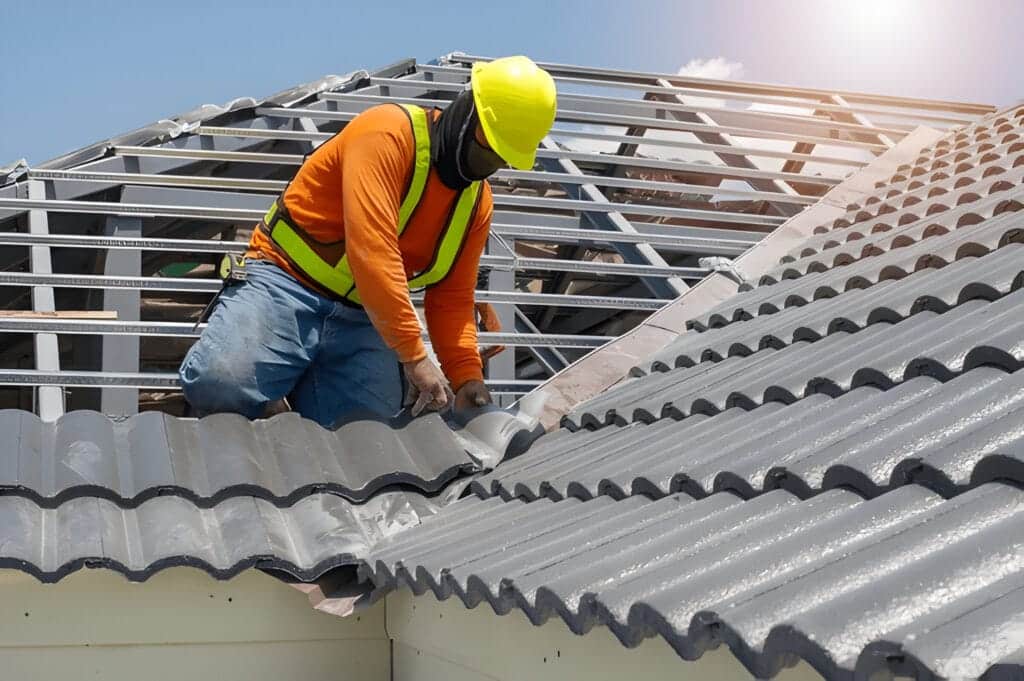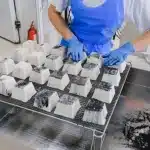When Texas homeowners face deteriorating roofing conditions, the decision between complete roof replacement and applying protective coatings can significantly impact both immediate costs and long-term property value. With Texas experiencing extreme weather patterns, from scorching summer temperatures exceeding 100°F to severe hailstorms and occasional freeze events, making the right roofing decision becomes critical for protecting your investment.
The choice between roof replacement and roof coating isn’t always straightforward. Each option offers distinct advantages depending on your roof’s current condition, age, and your budget constraints. Understanding the specific factors that influence this decision will help you make an informed choice that serves your home’s needs for years to come.
This comprehensive guide examines the key considerations Texas homeowners should evaluate when deciding between roof replacement and roof coating. We’ll explore cost comparisons, longevity expectations, climate-specific factors, and practical applications to help you determine which solution best fits your situation.
Understanding Roof Coating Applications
Roof coatings represent a protective solution that can extend your existing roof’s lifespan by creating a seamless, waterproof barrier over your current roofing material. These liquid-applied membranes cure to form a durable, elastic surface that reflects sunlight and provides enhanced weather resistance.
The effectiveness of roof coatings depends heavily on the substrate condition. Single-ply membranes, metal roofing, and modified bitumen systems typically respond exceptionally well to coating applications. However, severely damaged or structurally compromised roofs require replacement rather than coating to ensure proper protection.
Modern roof coatings offer impressive performance statistics. According to 2023 industry data, properly applied acrylic coatings can reduce roof surface temperatures by 50-80°F compared to uncoated surfaces. This temperature reduction translates to significant energy savings, particularly valuable for Texas homeowners facing rising utility costs.
Evaluating Current Roof Condition
The decision between replacement and coating fundamentally depends on your roof’s existing condition. Professional Pickle Roofing Solutions assessments typically examine membrane integrity, fastener condition, insulation status, and structural soundness to determine the most appropriate solution.
Roofs showing minor weathering, isolated punctures, or surface-level deterioration often qualify as excellent candidates for coating systems. These applications can address multiple small issues simultaneously while providing uniform protection across the entire roof surface.
Conversely, roofs exhibiting widespread membrane failure, significant structural damage, or extensive water infiltration require complete replacement. Attempting to coat severely compromised roofing materials typically results in premature failure and ultimately higher costs than addressing the underlying problems properly.
A recent case study from Austin involved a 15-year-old commercial building where strategic coating application extended the roof’s service life by 12 years, saving the property owner approximately $45,000 compared to immediate replacement costs.
Cost Analysis and Budget Considerations
Financial considerations play a crucial role in the replacement versus coating decision. Roof coatings typically cost 60-70% less than complete replacement, making them attractive for budget-conscious property owners seeking immediate protection without major capital expenditure.
The average cost for quality roof coating in Texas ranges from $2.50 to $4.50 per square foot, including surface preparation and application. Complete residential roof replacement costs typically range from $8.00 to $15.00 per square foot, depending on material selection and complexity factors.
However, cost analysis should extend beyond immediate expenses. Coating applications generally provide 10-15 years of protection, while new roofing systems offer 20-30 year lifespans. When evaluating long-term costs, consider the total cost of ownership including energy savings, maintenance requirements, and eventual replacement needs.
Climate-Specific Factors for Texas Properties
Texas weather conditions create unique challenges that influence the coating versus replacement decision. The state’s intense UV exposure, thermal cycling, and severe weather events require careful consideration of each option’s performance characteristics.
High-quality reflective coatings excel in Texas heat by reducing membrane temperatures and decreasing cooling loads. These benefits prove particularly valuable for flat or low-slope roofs that absorb significant solar energy throughout the day.
Hail resistance represents another critical factor. While coatings provide some impact protection, severely hail-prone areas may benefit more from impact-resistant replacement materials. Properties in North Texas, where hail damage occurs frequently, should carefully weigh each option’s storm resistance capabilities.
The following factors favor coating applications in Texas climates:
- Excellent heat reflection properties reducing energy costs
- Seamless application eliminating potential leak points
- Flexibility accommodating thermal expansion and contraction
- Quick installation minimizing weather exposure during application
- Superior UV resistance extending substrate life
Replacement becomes more favorable when considering these climate factors:
- Enhanced structural integrity for severe weather resistance
- Opportunity to upgrade insulation and energy efficiency
- Improved wind uplift resistance for hurricane-prone coastal areas
- Complete system renewal addressing all potential failure points
- Integration of modern materials designed for extreme climate conditions
Long-term Performance and Maintenance Requirements
Performance expectations differ significantly between coating and replacement options. Understanding these differences helps property owners set realistic expectations and plan appropriate maintenance schedules.
Quality roof coatings require periodic inspection and minor maintenance to achieve optimal performance. Annual inspections should focus on areas around penetrations, edges, and high-traffic zones where wear typically occurs first. Minor repairs using compatible materials can address small issues before they compromise the entire system.
Replacement systems generally require less frequent maintenance but involve higher costs when repairs become necessary. Modern roofing materials offer improved durability, but component failures may require specialized contractors and materials for proper repair.
Energy performance represents another long-term consideration. Reflective coatings maintain their energy-saving benefits throughout their service life, while traditional roofing materials may experience declining efficiency as they age and weather.
Professional Assessment and Installation Considerations
The complexity of choosing between coating and replacement underscores the importance of professional evaluation. Experienced roofing contractors can identify factors that may not be apparent during casual inspection, ensuring your decision addresses both obvious and hidden concerns.
Professional evaluations typically include moisture surveys, structural assessments, and energy efficiency analyses. These comprehensive examinations provide the detailed information necessary for informed decision-making.
Installation quality significantly impacts both coating and replacement performance. Proper surface preparation, weather conditions during application, and adherence to manufacturer specifications determine long-term success regardless of which option you choose.
Consider contractor experience with your specific roofing type and chosen solution. Coating applications require specialized knowledge of surface preparation, primer selection, and application techniques that differ from traditional roofing installation methods.
Making the Final Decision
Several key indicators can guide your final decision between roof replacement and coating. Properties with structurally sound roofs showing surface-level deterioration often benefit most from coating applications, while buildings with multiple system failures typically require complete replacement.
Budget constraints and timeline requirements also influence the decision. Coating projects typically complete faster with less disruption, making them suitable when immediate protection is needed without major construction impacts.
Future building plans should factor into your decision. Properties scheduled for expansion or major renovations within the next decade may benefit from coating as an interim solution, while buildings intended for long-term ownership often justify replacement investment.
Frequently Asked Questions
How long do roof coatings last in Texas weather conditions?
Quality roof coatings typically provide 10-15 years of protection in Texas climates when properly applied and maintained. The intense UV exposure and temperature fluctuations common in Texas can affect longevity, but modern formulations are specifically designed to withstand these conditions. Regular inspection and minor maintenance can help coatings achieve their full service life expectancy.
Can roof coatings be applied over any type of existing roofing material?
Roof coatings work best on specific substrate types including single-ply membranes, metal roofing, modified bitumen, and built-up roofing systems. However, the existing roof must be in structurally sound condition without significant damage or moisture infiltration. Certain materials like wood shake or severely deteriorated substrates are not suitable for coating applications and require replacement instead.
What are the energy savings potential with reflective roof coatings in Texas?
Reflective roof coatings can reduce cooling costs by 10-25% in Texas climates by lowering roof surface temperatures and reducing heat transfer into buildings. The actual savings depend on factors including building insulation, HVAC system efficiency, and roof size. Properties with dark-colored roofs or inadequate insulation typically see the greatest energy cost reductions after coating application.
How does hail damage affect coated roofs versus replaced roofs?
Both coated and replaced roofs can sustain hail damage, but their repair requirements differ significantly. Minor hail damage on coated roofs can often be repaired with localized coating application, while replacement systems may require component replacement. However, severely hail-damaged coatings may require complete reapplication, while quality replacement materials often provide better impact resistance for storm-prone areas.
When is roof replacement definitely necessary instead of coating?
Roof replacement becomes necessary when structural integrity is compromised, widespread membrane failure exists, or significant water damage has occurred. Signs requiring replacement include sagging deck areas, extensive moisture infiltration, failed fastening systems, or deterioration affecting more than 25% of the roof area. Additionally, roofs nearing the end of their expected lifespan should typically be replaced rather than coated to avoid premature failure.
Roof Coating vs. Replacement: Choosing the Best Path for Long-Term Protection
Choosing between roof replacement and coating for your Texas home requires careful evaluation of multiple factors including current roof condition, budget constraints, climate considerations, and long-term property plans. While coating offers cost-effective protection for structurally sound roofs, replacement provides comprehensive system renewal for properties with significant damage or aging infrastructure. The decision ultimately depends on balancing immediate needs with long-term performance expectations and financial considerations. Consulting with experienced roofing professionals ensures you receive accurate assessment and recommendations tailored to your specific situation, helping you make an informed choice that protects your investment and provides reliable performance for years to come.
About Pickle Roofing Solutions
Pickle Roofing Solutions specializes in comprehensive roofing services with over 15 years of experience serving Texas homeowners and commercial properties. We provide expert roof replacement, coating applications, and restoration services including GAF roofing systems, standing seam metal roofing, and energy-efficient solutions. Our team of certified professionals combines technical expertise with deep knowledge of Texas climate challenges to deliver lasting protection and performance.
We pride ourselves on thorough assessments, quality workmanship, and transparent communication throughout every project. Our comprehensive approach includes spray foam insulation services to maximize energy efficiency and building performance. We’ve helped hundreds of Texas property owners make informed decisions about their roofing needs while providing reliable installation and maintenance services.
Contact our team today to discuss how our roofing expertise can help you choose the right solution for your Texas property. Schedule a consultation to learn more about our coating and replacement services and how we’ve helped clients achieve long-term protection and energy savings.
| Business Name: | Pickle Roofing Solutions |
| Address: | 1333 W McDermott Dr # 200, Allen, TX 75013 |
| Phone number: | (972) 954-7186 |







